Auto Bipap Ventilator
$649.00 USD
Designed specifically for patients with respiratory insufficiency, the bi-level non-invasive ventilator utilizes intelligent technology to provide a safe and secure breathing experience. The bi-level mode precisely adapts to respiratory rhythms, while combined with no pressure before bed, intelligent sleep detection, and automatic delayed pressure increase, it fully adapts to the body’s needs and provides gentle and effortless adjustments. Safe and convenient, real-time data monitoring allow for remote monitoring of health status, while a comprehensive alarm mechanism provides timely warnings. Details enhance comfort, including pre-heating and intelligent temperature and humidity control to eliminate condensation, quiet operation to prevent sleep disturbances, and intelligent target tidal volume adaptation for natural and comfortable breathing. Professional performance and meticulous care strengthen patients’ health and help them regain a quality of life.
Description
Specification
| Model | G3 B20A |
| Dimensions | 265 × 145 × 114 mm / 10.43 × 5.71 × 4.49 inches |
| Weight | 1.7 kg |
| Operating Modes | CPAP/S/Auto |
| Ramp | 0-60 minutes, 5-minute increments |
| Pressure Range | 4-20(cmH2O) |
| Pressure Accuracy | ±0.5(cmH2O) |
| Power Supply | 100-240V |
What is respiratory insufficiency?

Severe respiratory impairment causes arterial oxygen levels to fall below the normal range (PaO2 < 8 kPa), with or without the risk of elevated partial pressure of carbon dioxide (PaCO2 > 6.67 kPa). The dangers of respiratory insufficiency include chronic respiratory failure (COPD), where breath holding leads to hypoxia and elevated carbon dioxide levels. Acute, severe hypoxia can lead to various heart conditions.
Three Modes
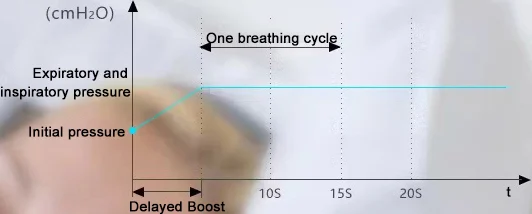
CAPA Mode
CAPA mode is a unique mode of semi-automatic ventilator, which releases constant pressure over time. By continuously providing stable positive airway pressure, it keeps the airway open, improves sleep quality and hypoxia.Suitable for patients with obstructive sleep apnea hypopnea syndrome, chronic obstructive pulmonary disease, respiratory failure and other diseases.
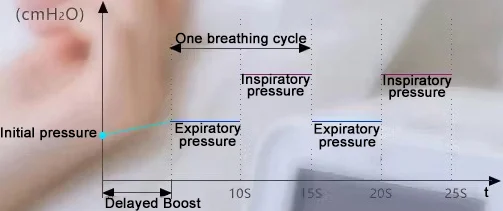
S Mode
S-mode is a bilevel constant-pressure mode with two constant-pressure and time settings. This mode allows the patient to breathe spontaneously while receiving ventilator support. The ventilator monitors the user’s respiratory flow and actively increases pressure to assist gas delivery. This mode is suitable for patients who are breathing well on their own but have difficulty breathing due to conditions such as obstructive sleep apnea, chronic obstructive pulmonary disease, and neuromuscular diseases.
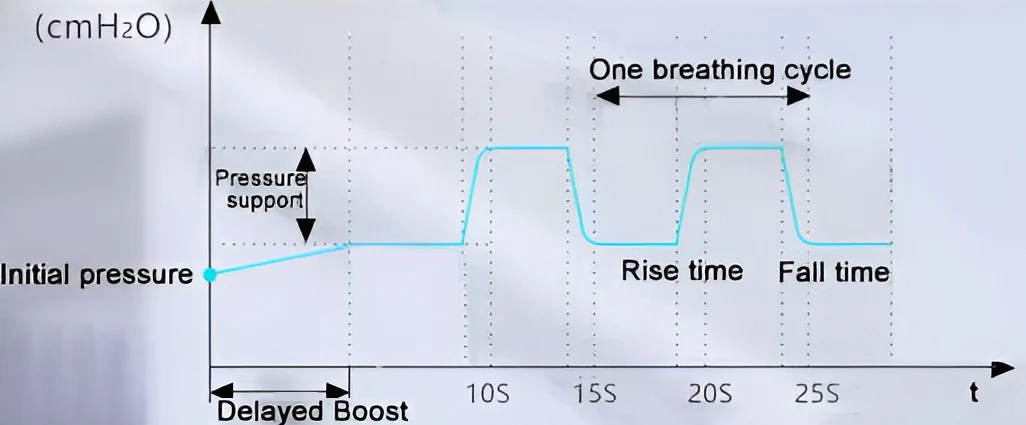
Auto S Mode
Auto S mode is a unique feature of the bi-level ventilator, featuring intelligent pressure regulation at two pressures and two time intervals. This intelligent mode simulates human breathing, using a lower expiratory pressure during exhalation to maintain airway patency and a higher inspiratory pressure during inhalation to ensure optimal ventilation.This mode is suitable for patients who have high requirements for breathing comfort, obstructive sleep apnea, central sleep apnea or obesity.
Product Features
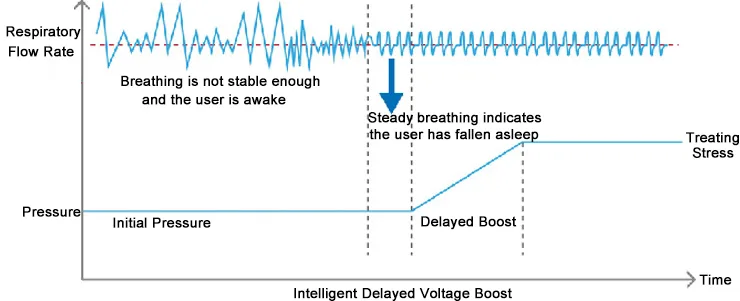
Automatic Delayed Voltage Boost
The automatic delayed pressure increase function can start with low pressure at the beginning of the user’s sleep, avoiding the discomfort and interference caused by the initial high pressure, and then gradually and steadily increase to the therapeutic pressure as the user falls asleep. It not only ensures that the user can fall asleep smoothly, but also ensures the effective use of subsequent therapeutic pressure, thereby improving user comfort and compliance.
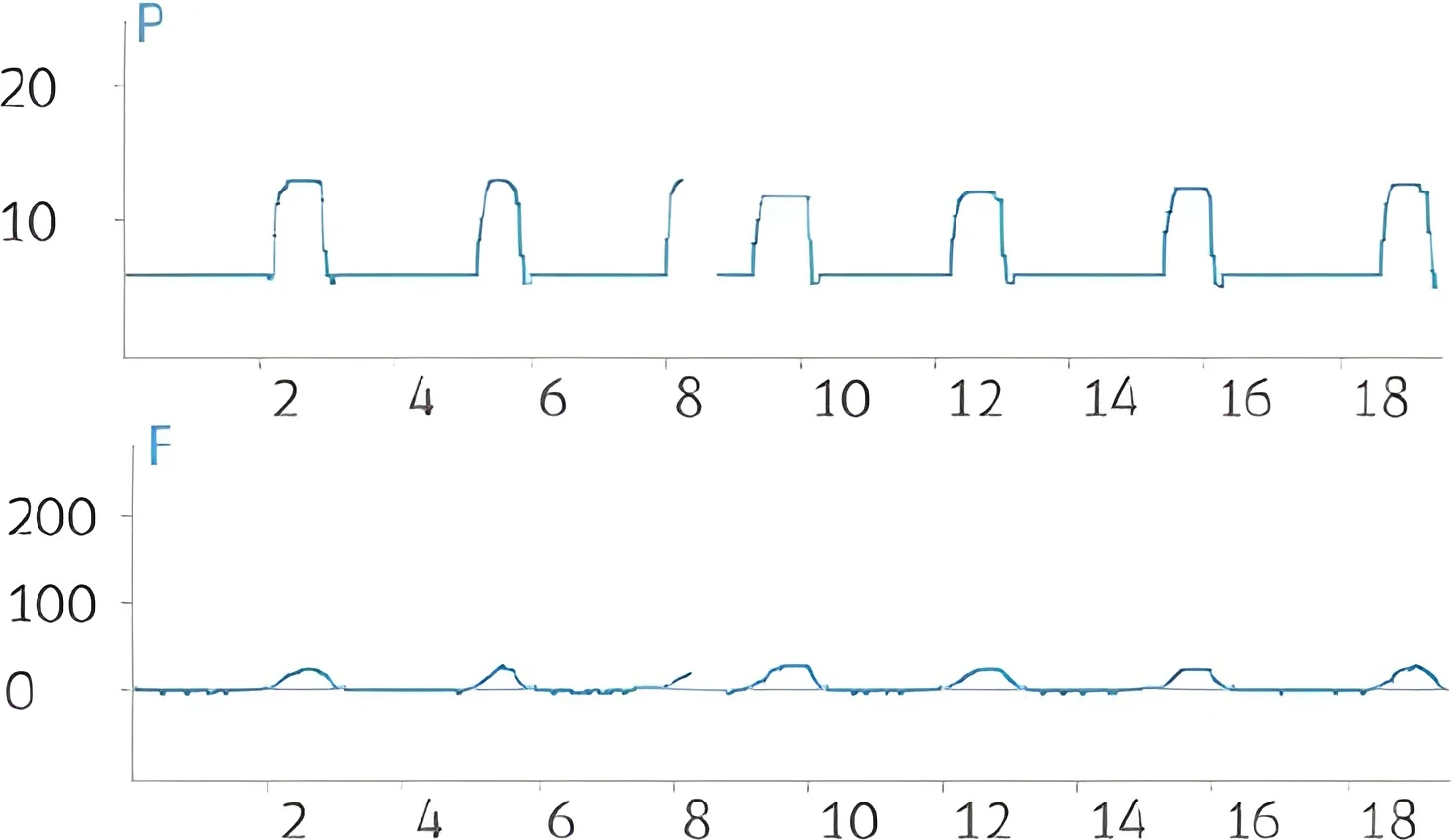
Real-time Data Monitoring
The real-time waveform displays the dynamic changes in pressure (P) and flow (F) over time, intuitively reflecting the airway pressure support and airflow status during the respiratory cycle. This allows users and doctors to monitor treatment status at all times, ensuring accurate and effective treatment.
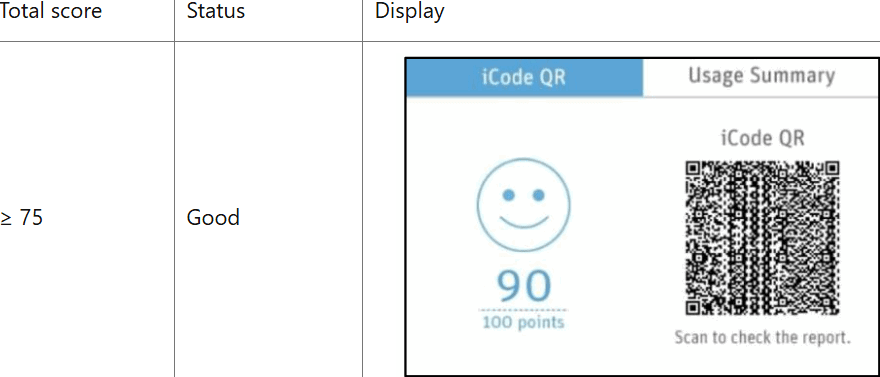
Data View
After the treatment, the usage score and summary will be displayed, and the data can be viewed by scanning the code, allowing users to quickly grasp the usage of the day and intuitively understand the treatment status.
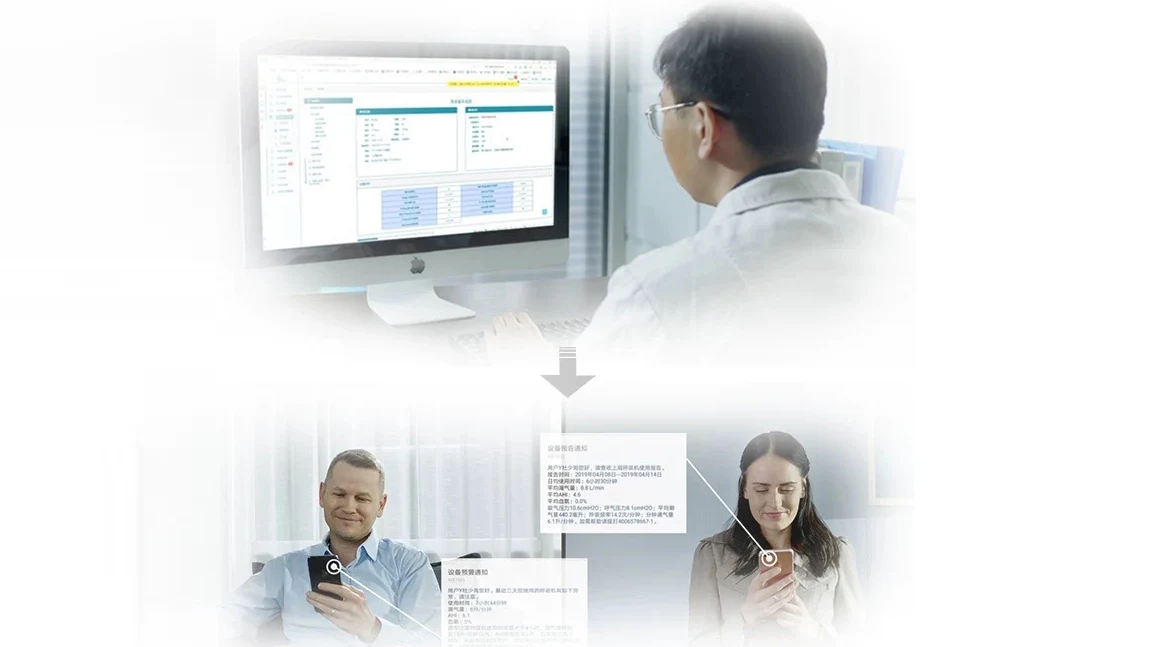
Remote Data Management
The remote data management function automatically uploads data through the built-in GPRS module, allowing medical staff to remotely check the condition and adjust parameters, eliminating the need for travel. Patients can enjoy professional remote condition management and treatment services without leaving their homes.

Complete Alarm Mechanism
The complete alarm mechanism monitors potential abnormalities in multiple directions and issues an immediate alarm once a problem is detected, facilitating timely investigation and resolution, ensuring the safe and stable operation of the ventilator and reducing treatment risks.
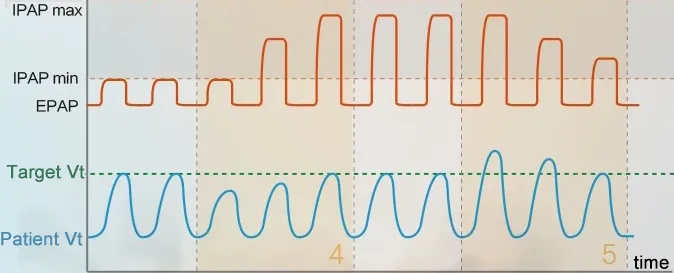
Target Tidal Volume
This function sets the target tidal volume and dynamically adjusts the plan by comparing the differences in real-time monitoring values, so that treatment has clear expectations, ensuring that the ventilation effect is accurately achieved, and improving the targetedness and effectiveness of treatment.
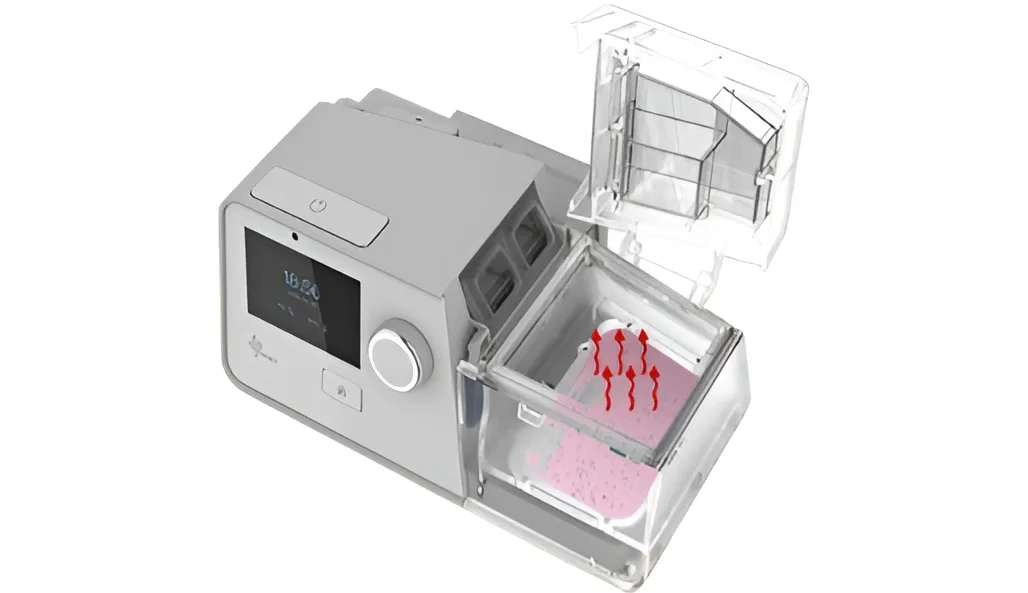
Preheat Before Bed
The preheating function before bedtime can heat the water in the humidifier in advance in cold and dry weather, allowing users to inhale warm air while using the ventilator, avoiding respiratory irritation caused by dry and cold air, greatly improving user comfort and helping users fall asleep more peacefully.

Intelligent Temperature and Humidity Control
The intelligent temperature and humidity control function senses the ambient temperature and humidity in real time, intelligently adjusts the working gear, and automatically outputs airflow with appropriate temperature and humidity to avoid dryness or coldness irritating the respiratory tract, improve user comfort, and ensure smooth respiratory treatment.
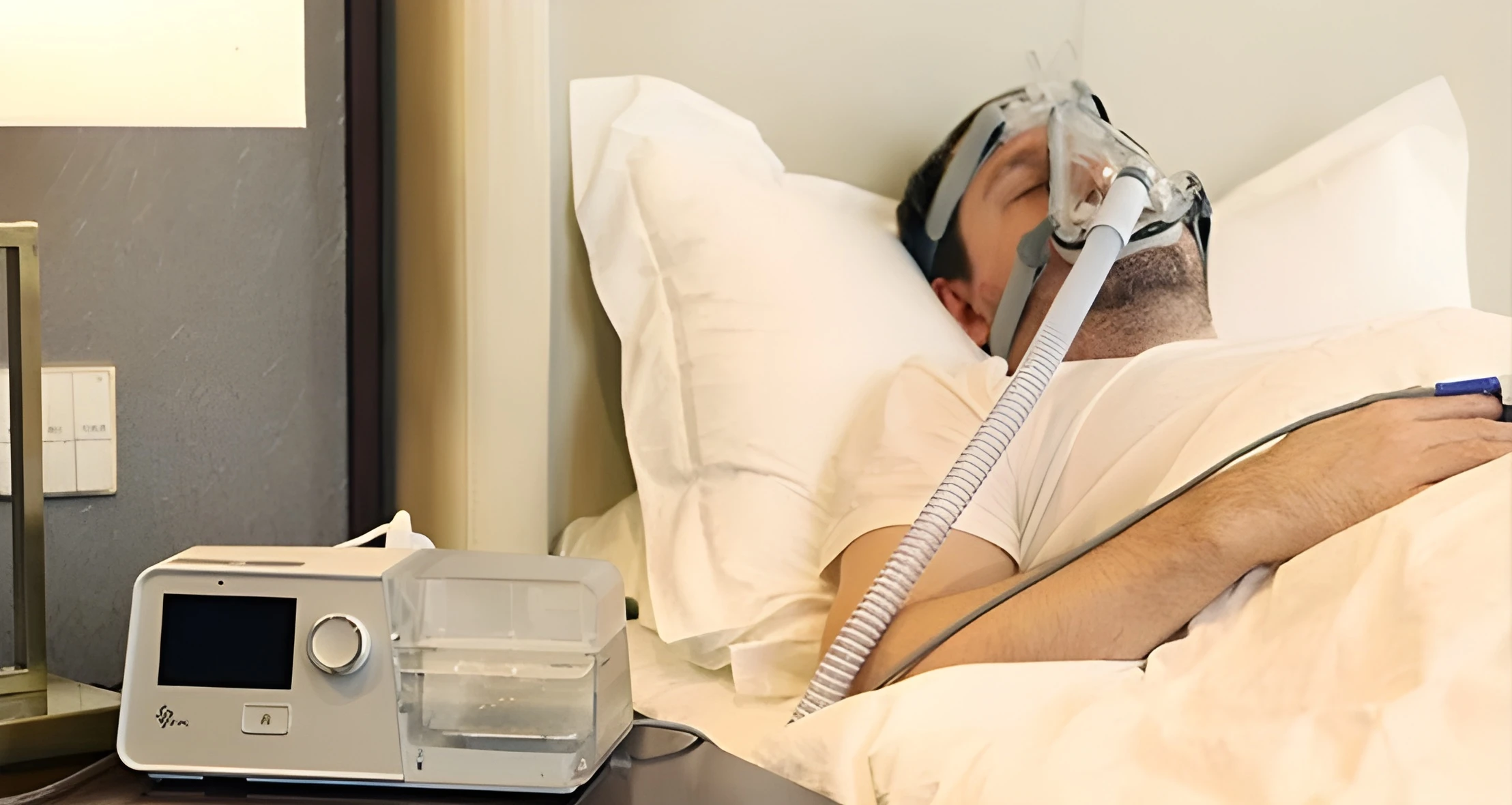
Light Sound Operation
The machine operates quietly, with the operating noise as low as 28Db. There is no noise that interferes with sleep. It neither affects the patient’s own sleep nor disturbs the sleep partner, allowing respiratory therapy to be carried out in silence.
Product Detail
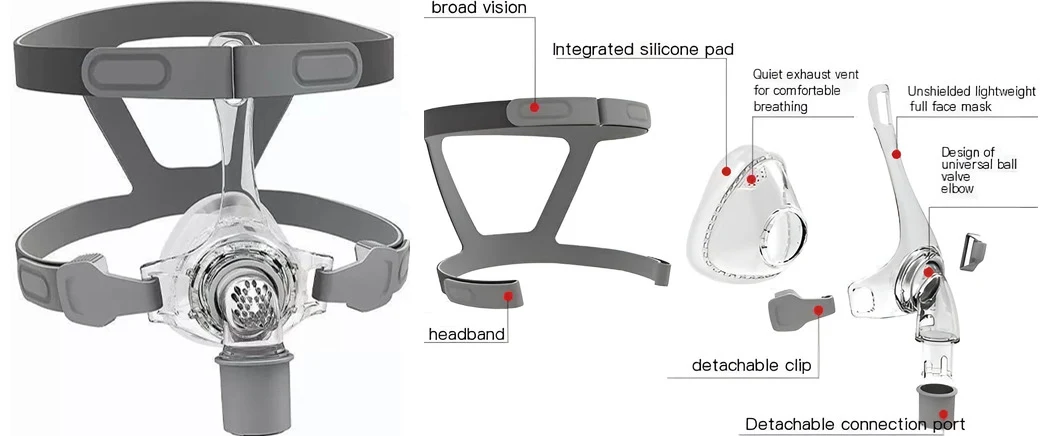
Nasal Mask
This nasal mask has significant advantages. It adopts a forehead support-free design, with a lightweight structure and a wide field of view, making it burden-free to use. The pleated design can adapt to the face and fit well. It is equipped with a universal ball valve elbow and detachable pipes for flexible use. It also has a scientific exhaust structure to help comfortable breathing and enhance the user experience.
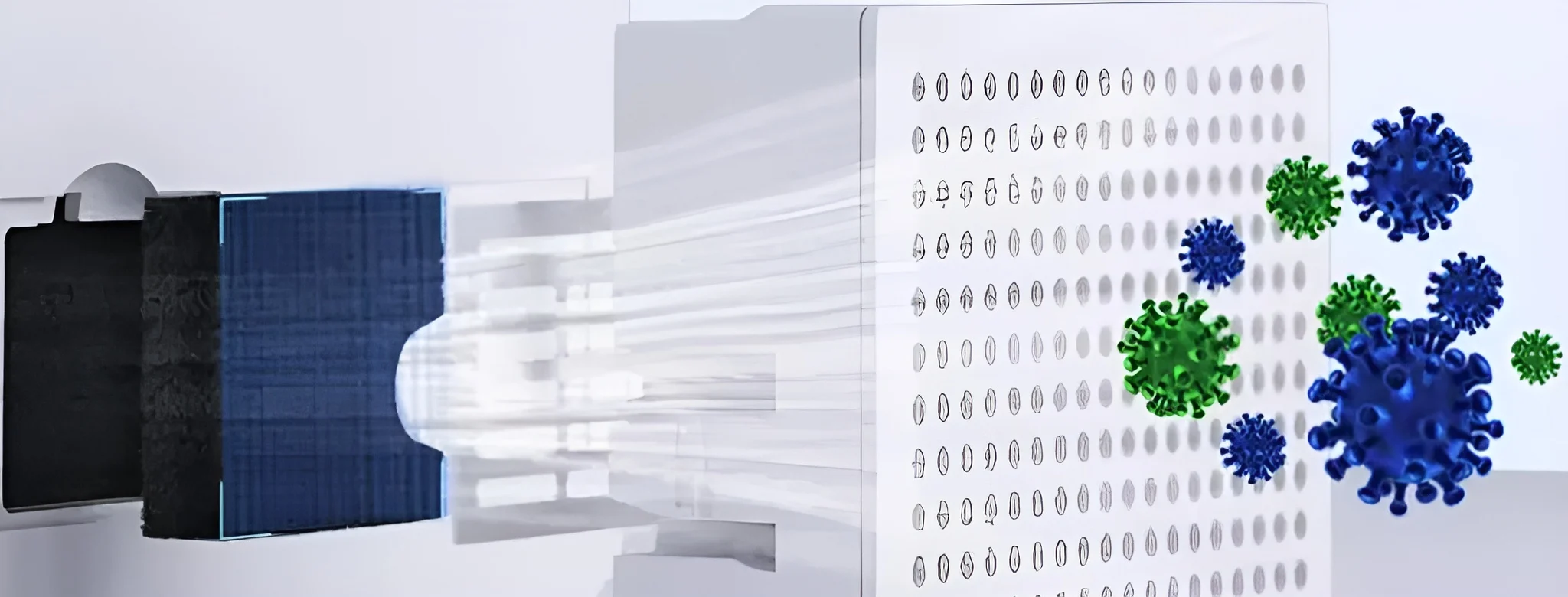
PM2.5 Ultra-fine Filtration Device
The PM2.5 ultra-fine filter keeps you away from air pollution and allergens. It deeply and efficiently filters PM2.5 particles, dust allergens, and more, with a filtration efficiency of up to 90%. You can set a replacement reminder to purify every breath you take.
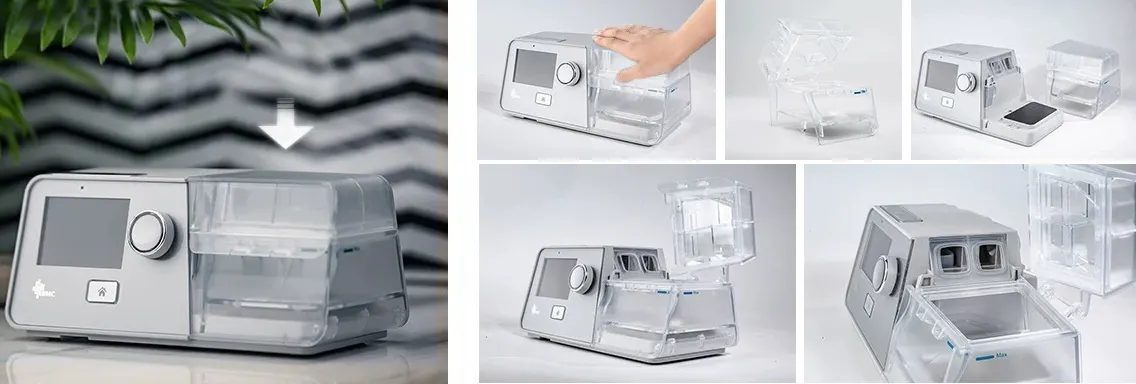
PUSH Structure Water Tank
With the high reliability of the integrated humidifier and the Push-Push water-adding structure, it can not only output humidified airflow stably, but also make the water-adding operation convenient and labor-saving, thereby improving the convenience of use and the comfort of treatment.
Applicable People
OSAHS

Irregular snoring
Snoring manifests as intermittent, fluctuating sounds during sleep, frequently followed by sudden awakenings after apnea episodes. The device employs dual-level automatic pressurization to sustain airway patency, preventing collapse and minimizing airflow-induced vibrations in narrowed airways, thereby easing irregular snoring and fostering smoother breathing.

Morning headache
Repeated nighttime hypoxia during sleep triggers cerebral vasodilation and abnormal blood flow patterns, often leading to dull, throbbing, or swollen headaches upon waking. By alleviating sleep-related hypoxia, reducing carbon dioxide buildup in the body, and easing strain on cerebral blood vessels, the device effectively relieves morning headaches caused by poor sleep breathing.

Daytime sleepiness
Sleep apnea during the night can cause frequent micro-awakenings, which can reduce sleep quality and lead to uncontrollable daytime sleepiness and difficulty concentrating. The device corrects sleep structure disturbances, reduces micro-awakenings, and increases the proportion of deep sleep, fundamentally improving sleep quality and alleviating daytime sleepiness and fatigue.
Packing List
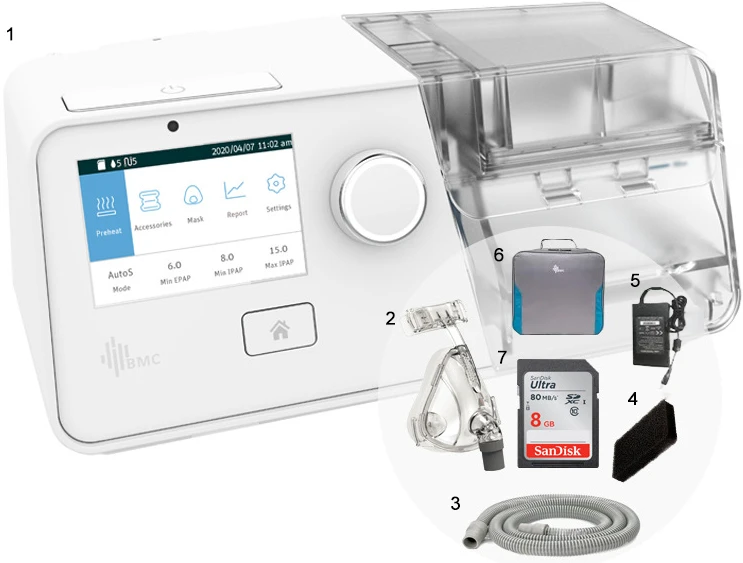
1. Main unit
2. Nasal mask (select size as needed)
3. Tubing
4. Filter pad
5. Power cord
6. Storage bag
7. SD card
Nasal Mask Size Selection
| Size | Nose wing distance | Distance from philtrum to nasal root |
| S | 4.8cm/1.89inches | 5.2cm/2.05inches |
| M | 5.1cm/2.01inches | 5.6cm/2.20inches |
| L | 5.3cm/2.09inches | 6.1cm/2.40inches |
Note: When placing an order, you need to contact customer service to note the size of the nose mask.
How to measure?
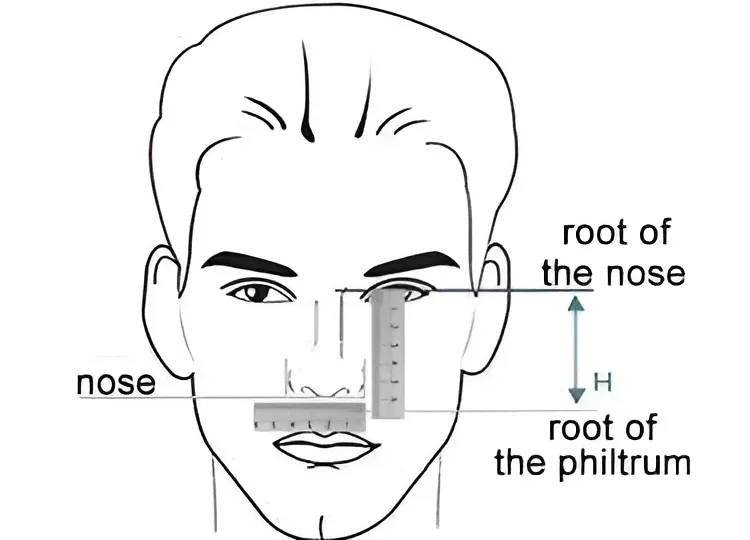
1. Measure the width of your nose wings as shown.
2. Measure the distance from the base of your philtrum to the root of your nose.
3. Do not place the ruler on the bridge of your nose when measuring.
4. Move the measuring pad horizontally left and right before measuring.
Device Setup
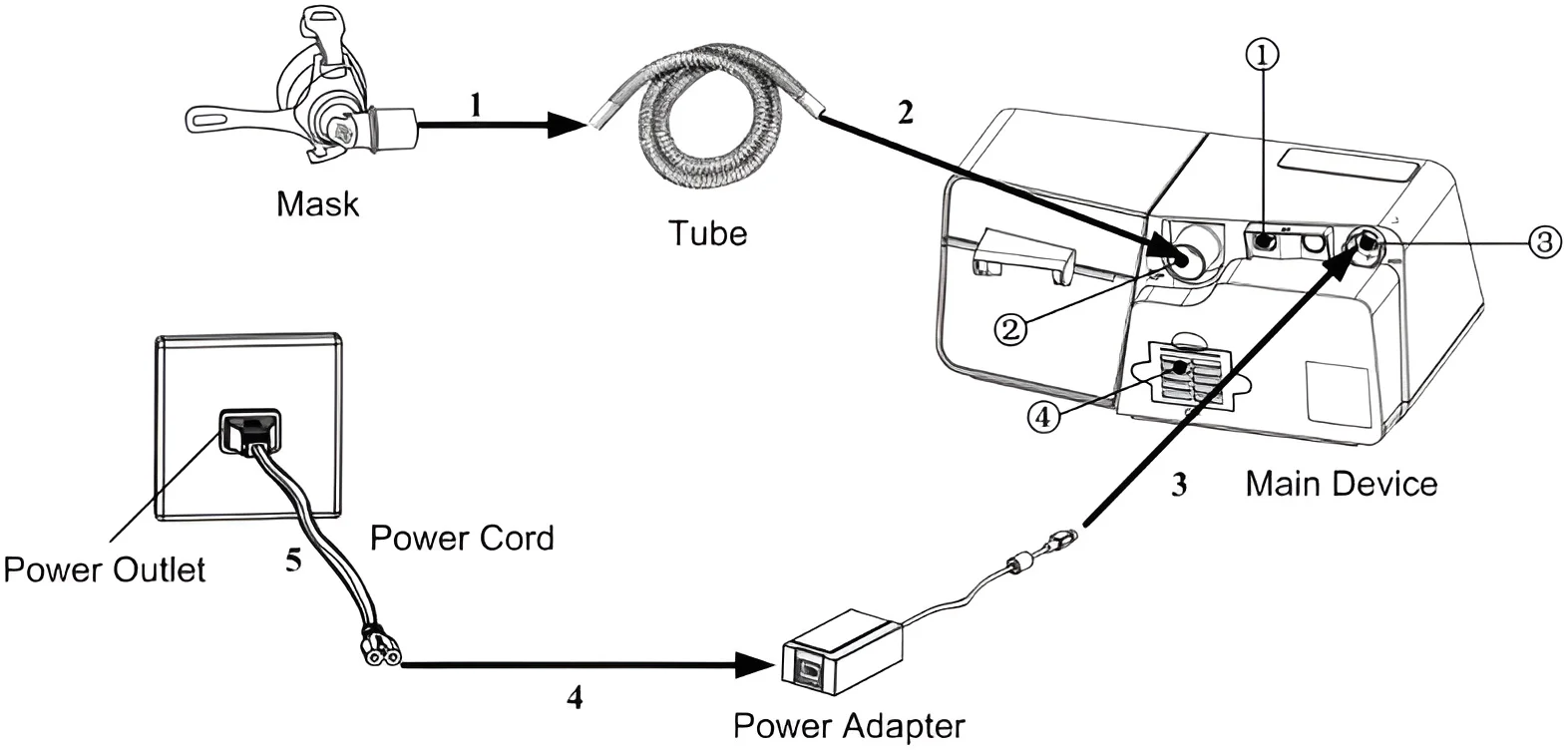
①. Heating tube port
②. Air outlet
③. DC power socket
④. Filter cover (air inlet)
Steps
1. Connect one end of the tube to the assembled mask.
2. Connect one end of the tube to the air outlet of the device, as shown in the figure above. Or Connect the heated tubing joint to the air outlet of the device, and then insert the power plug of the heated tubing into the heated tubing port on the back of the device.
3. Connect the power adapter to the DC inlet of the main device.
4. Connect the power cord to the power adapter.
5. Plug the power cord into the power outlet.
FAQ
Fill the water tank with 360ml of water, making sure the water level does not exceed the maximum water level. Use purified or distilled water, or boiled tap water and then cool it to room temperature before use. Change the water in the tank daily!
It needs to be replaced regularly. It is generally recommended to replace it every 3-6 months (the specific time should be adjusted according to the air quality of the use environment). If the filter is found to be obviously dirty or the breathing resistance increases, it needs to be replaced in time to ensure the filtering effect.
Dry mouth is often caused by pressurized air escaping from an open mouth, mouth breathing caused by a leaky mask, or the humidification setting being too low. It’s recommended to first check the mask seal and then adjust the humidifier to level 3-4 (based on air humidity) via the menu. If dry mouth persists, try breathing through your nose at night, using a nasal strip to close your mouth, or using a chin strap or full-face mask to prevent your mouth from opening during sleep.
Reviews (0)
Be the first to review “Auto Bipap Ventilator” Cancel reply
You must be logged in to post a review.

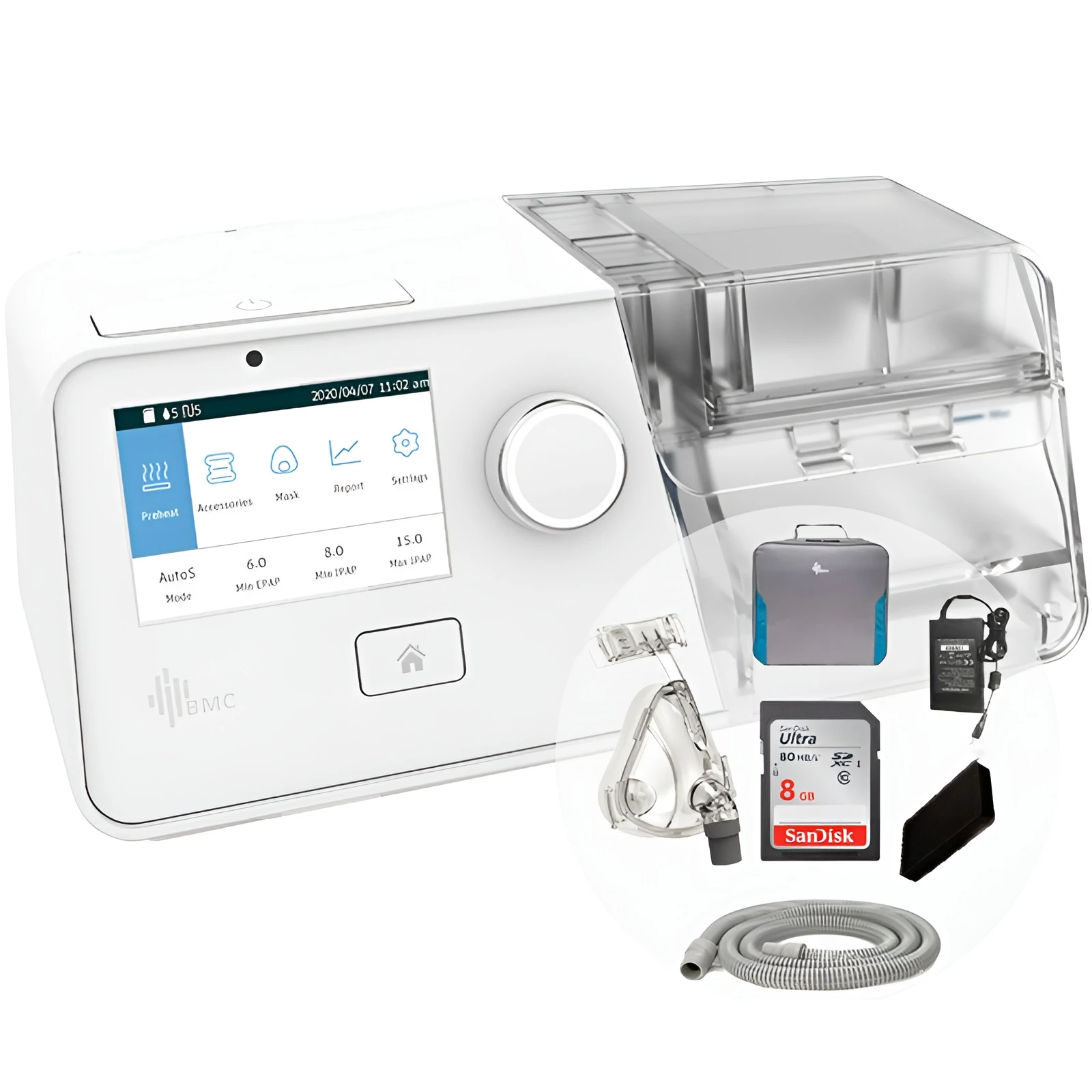
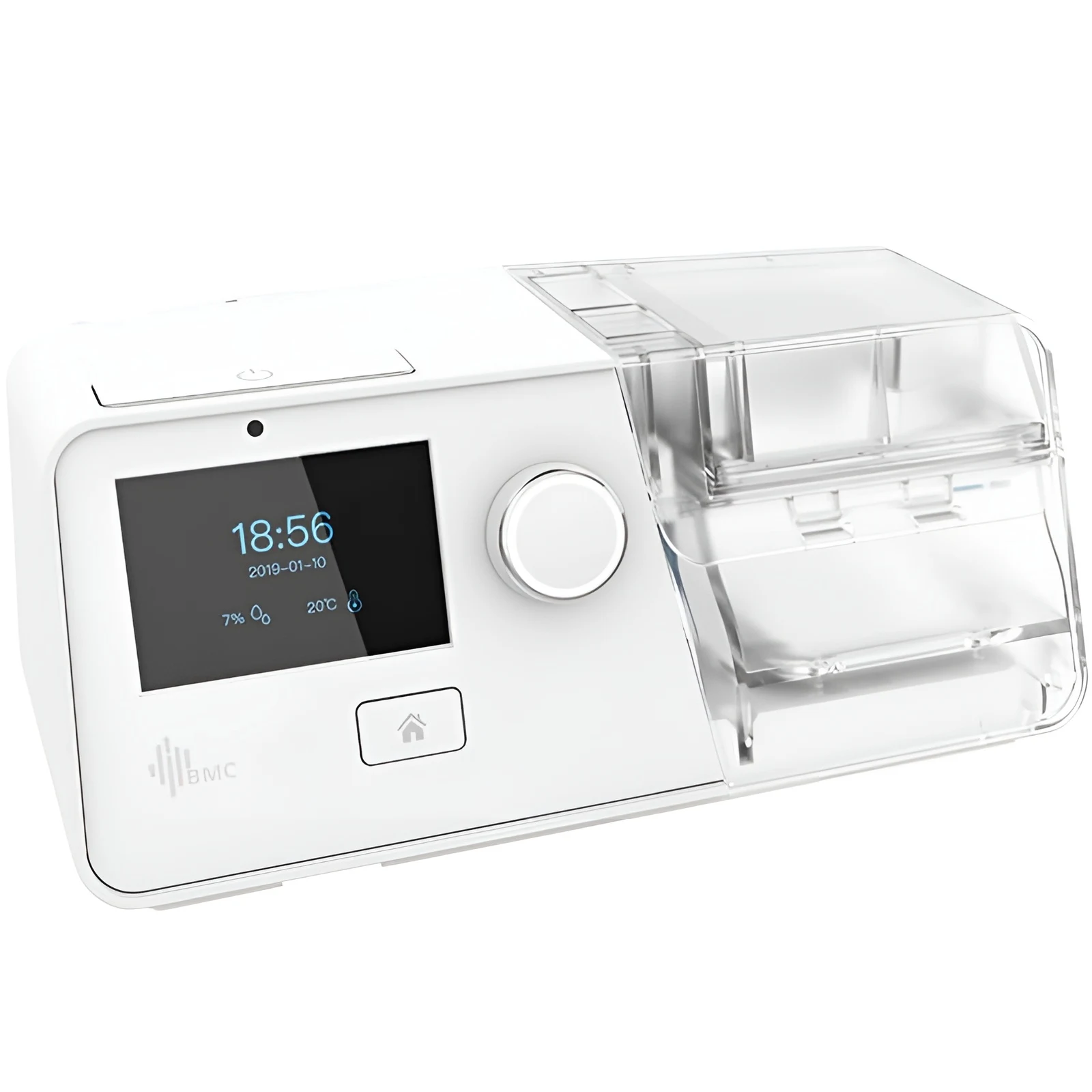
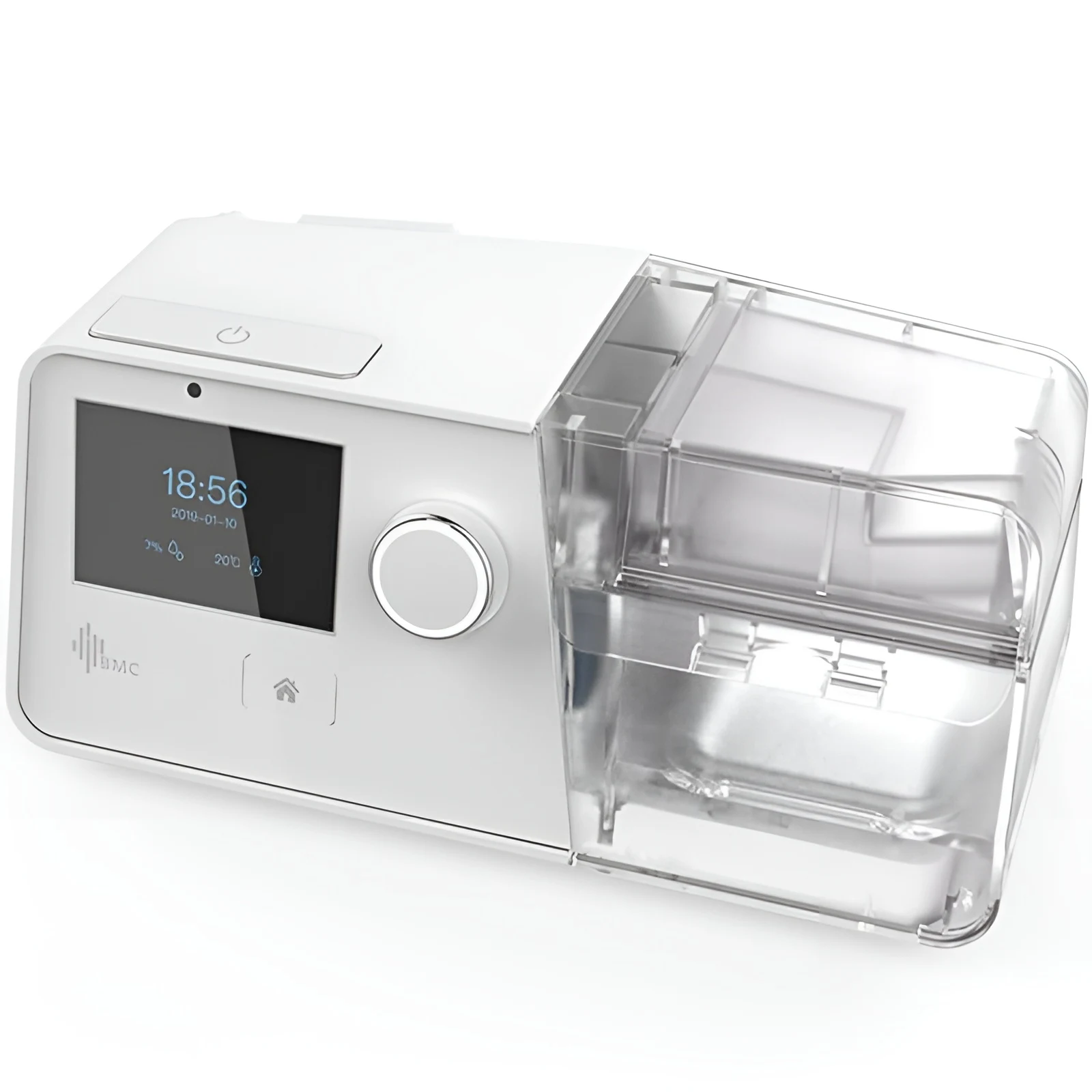
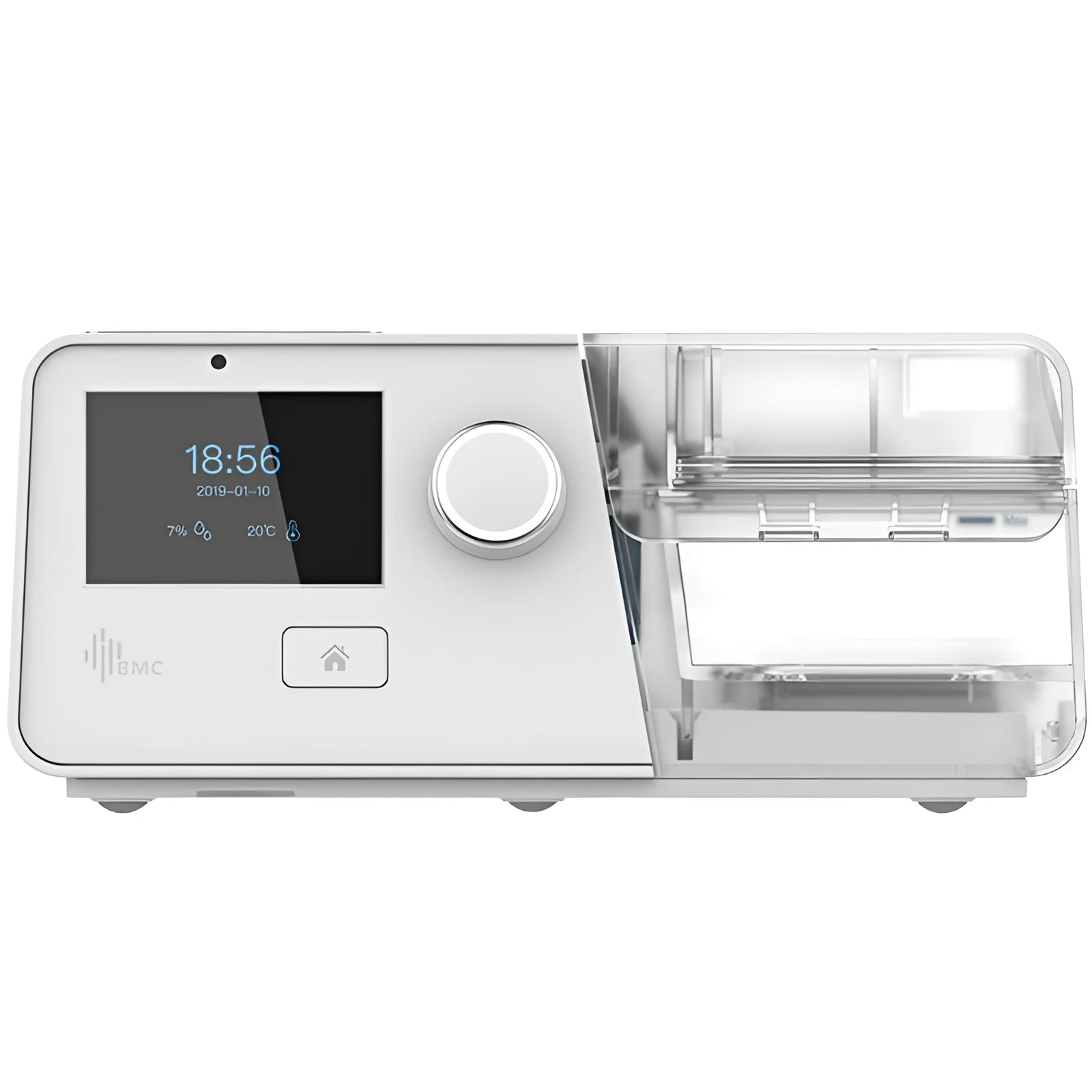
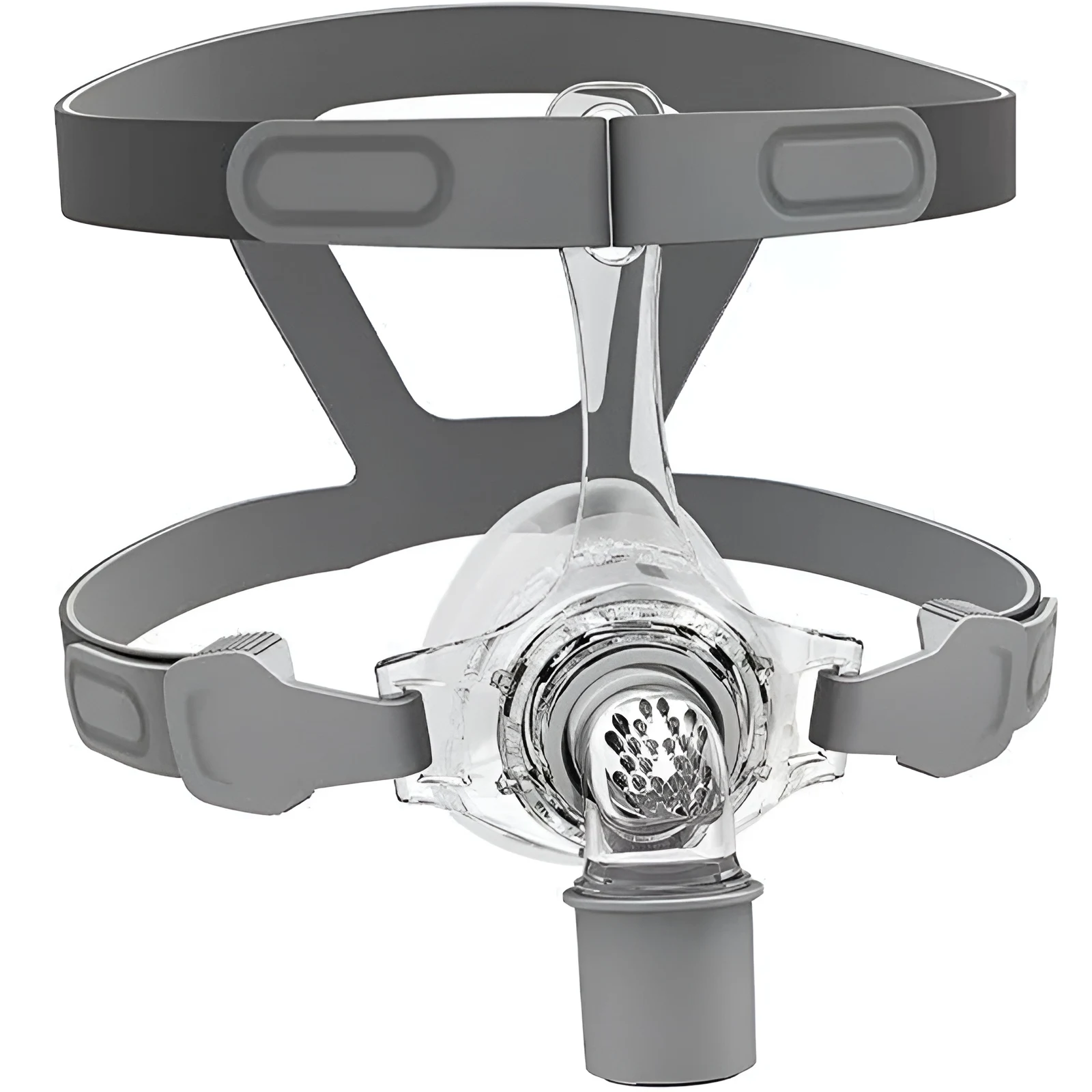
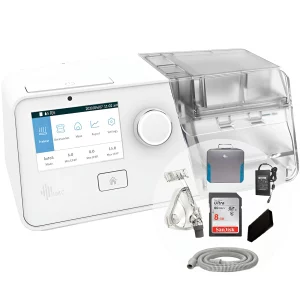
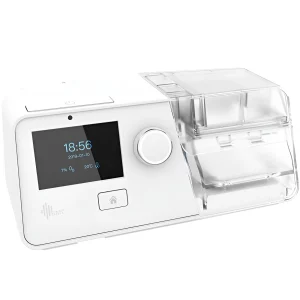

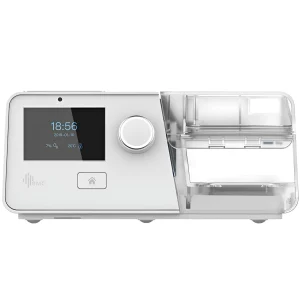
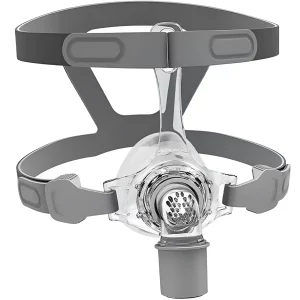
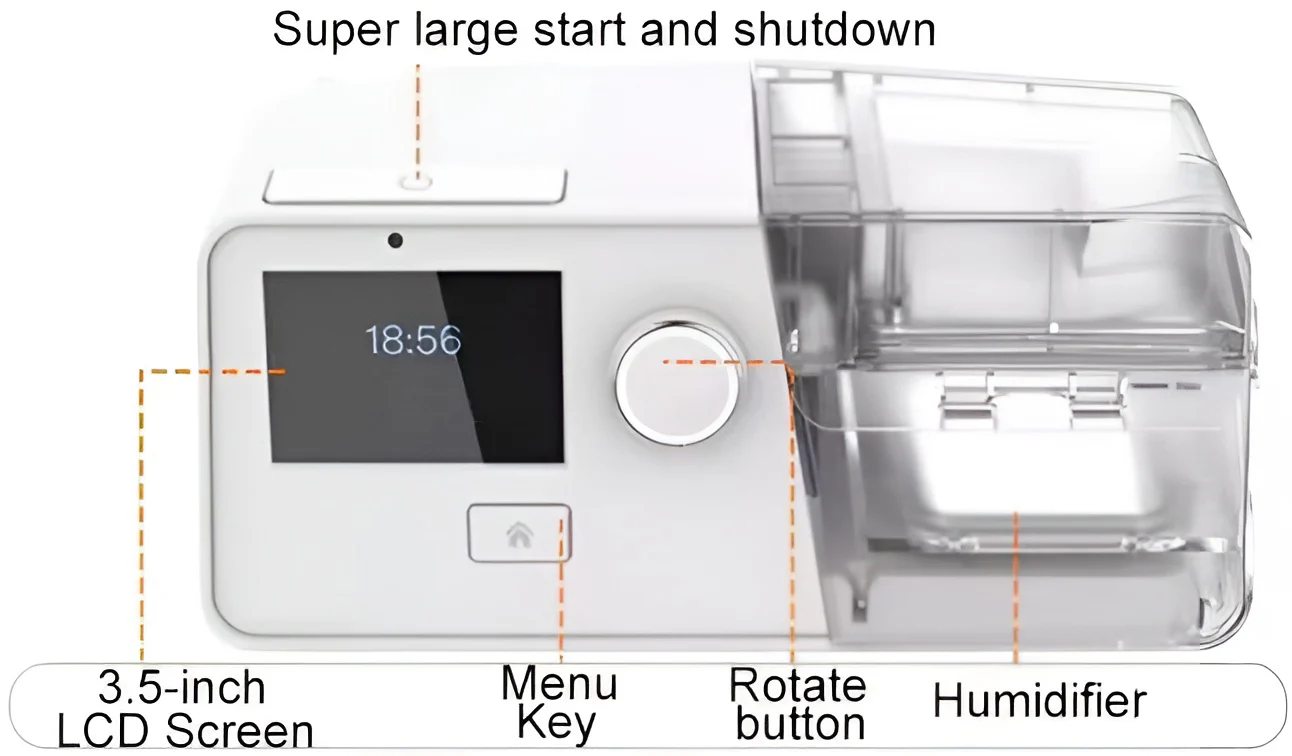
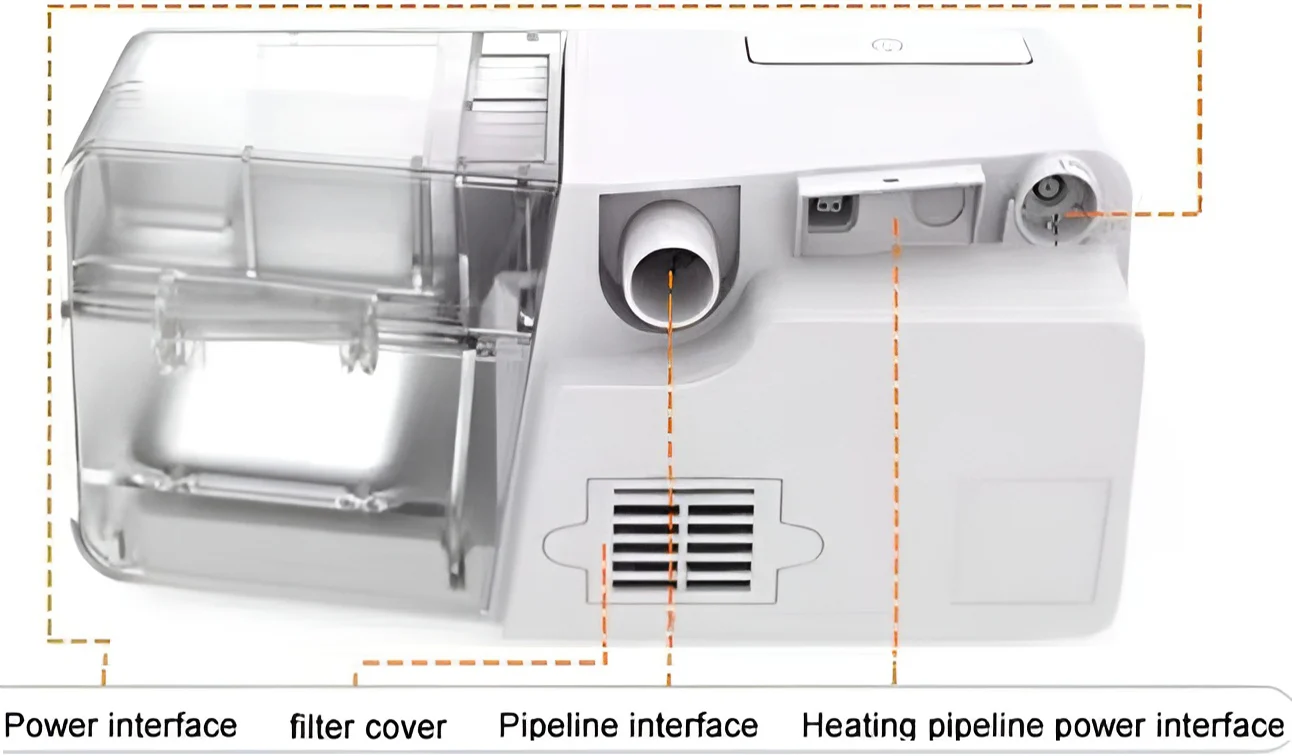
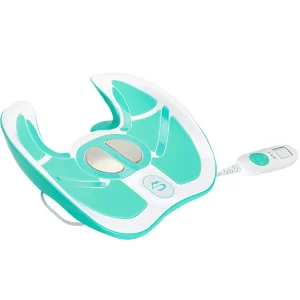
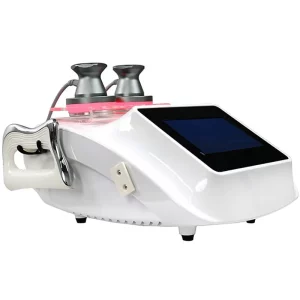
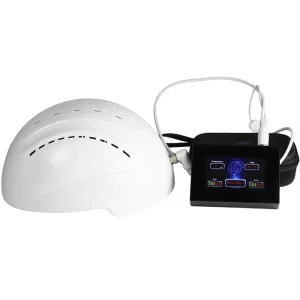
Reviews
There are no reviews yet.